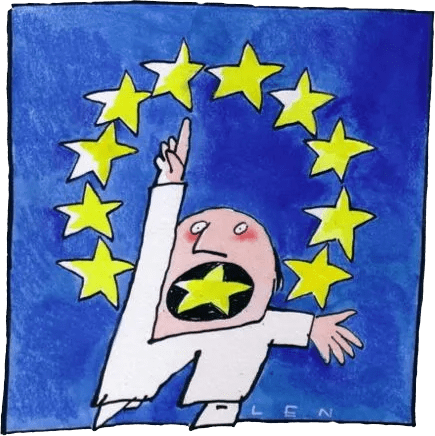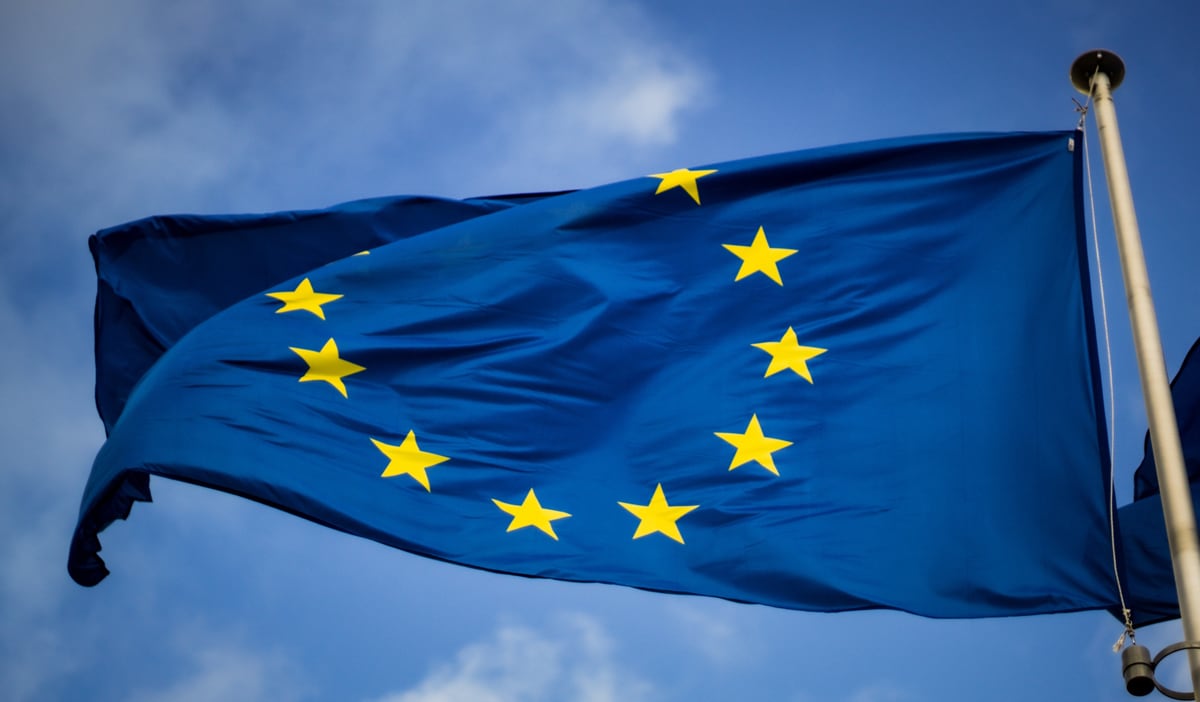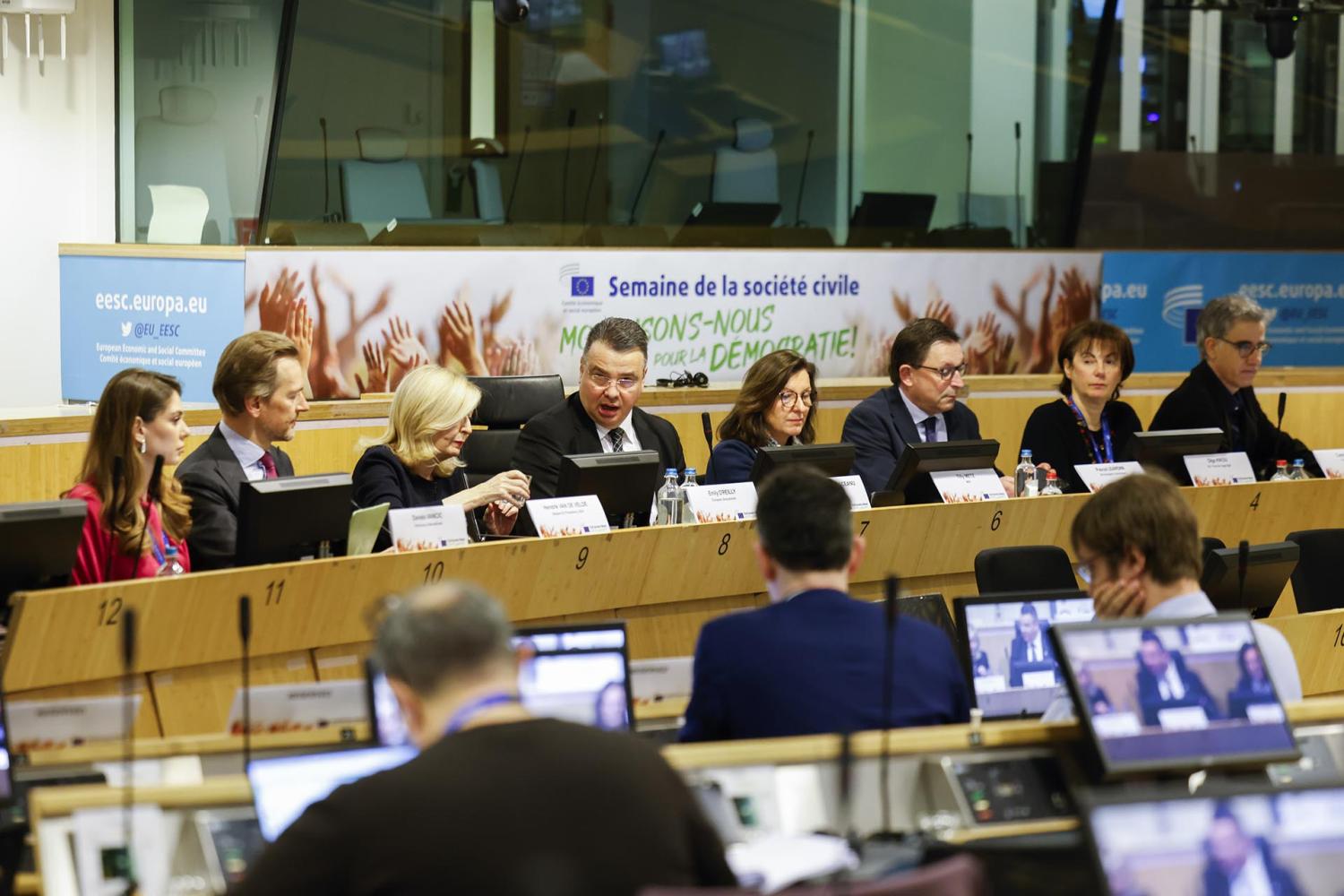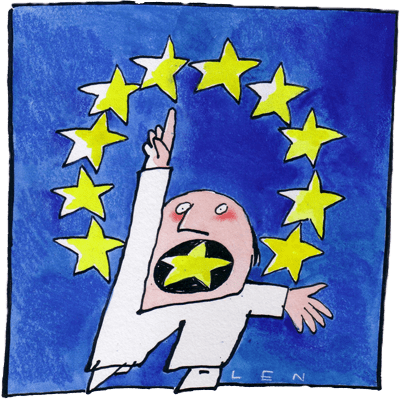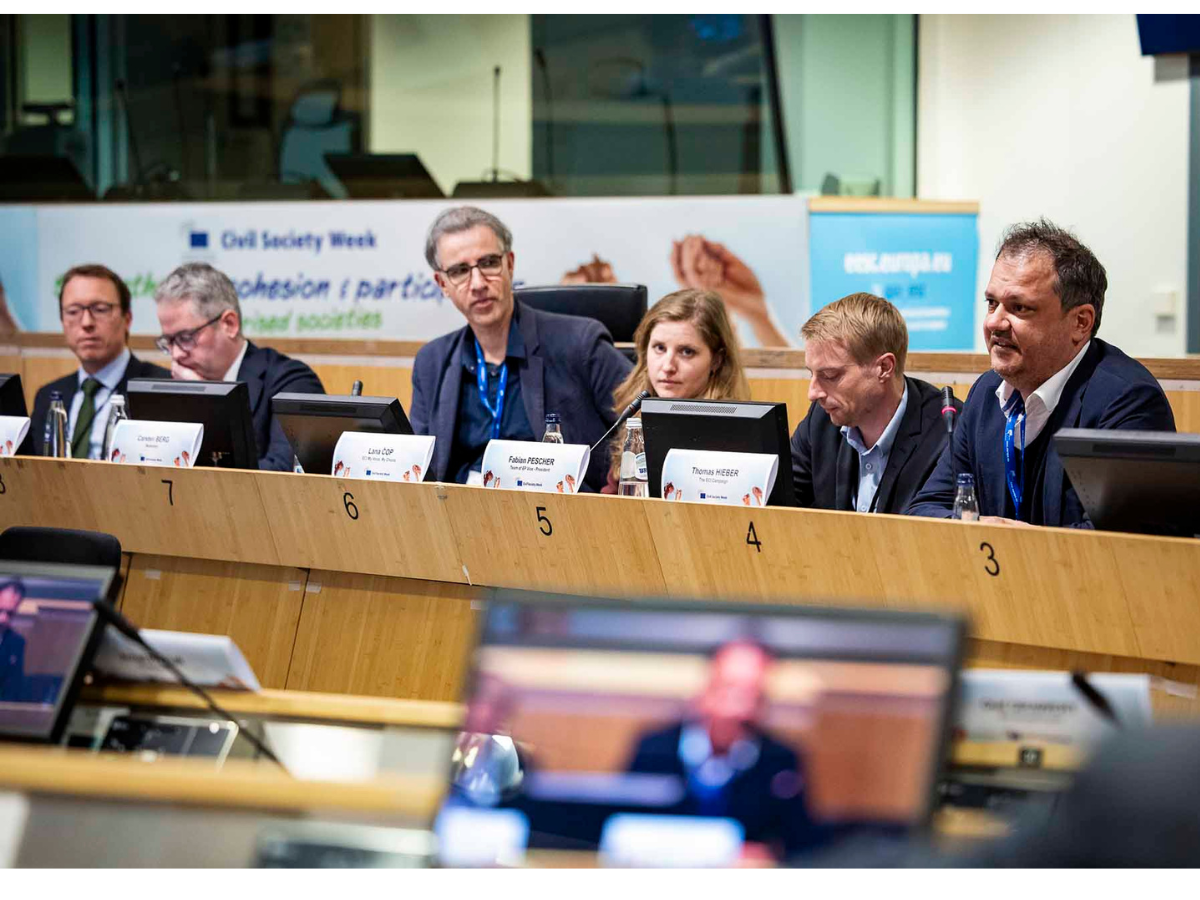
As part of Civil Society Week, the annual ECI Day is co-organised by The ECI Campaign together with the European Economic and Social Committee (EESC) and other partners. It is a chance for citizens, NGOs and officials from the EU institutions to meet, exchange ideas and support each other. The 2025 ECI Day edition under the theme “Strengthening Cohesion and Participation in Polarised Societies” took place on 18 March 2025 in Brussels, celebrating the ECI’s 13th anniversary since its foundation in 2012. While The ECI Campaign continues to emphasise that the lack of legislative follow-up weakens the ECI as a democratic instrument, we continue to support the unwavering work of ECI organisers who realise the ideal of democracy in action on the ground.
Each year, The ECI Campaign organises an event within the ECI Day, focusing on the improvement of the ECI. In 2025, our “An Impact Strategy for ECIs” workshop explored ways to strengthen the adequate implementation of successful initiatives featuring a wide array of ECI expertise. Carsten Berg, Director of The ECI Campaign, opened the panel by emphasising the importance of the horizontal impact of ECIs by creating connections between citizens and building bottom-up movements as well as the vertical impact of successful ECIs actually resulting in legislative change. Lana Čop, the organiser of the ongoing ECI My Voice, My Choice: For Safe and Accessible Abortion, which has already gathered over 1 million signatures, highlighted their impact on public discourse through the efforts of more than 1,500 active volunteers and innovative social media campaigns that have reached over 25 million people on Instagram. She believes that this ECI can break the cycle of the lack of implementation and be a precedent, “one where citizen-led demands will not just be acknowledged but will be effectively enacted”. David Knight, Cabinet member of the new ECI-responsible Commissioner Maroš Šefčovič, called the ECI an “agenda-setting tool” which gives European citizens a chance to shed light on issues that matter to them and mentioned that the 2020 reform made the instrument more accessible and campaign-friendly, while not denying the room for improvement, for example by raising awareness, visibility and explaining implementation better. Fabian Pescher, Senior Policy Advisor to EP Vice-President Katarina Barley, brought in the European Parliament’s perspective who has always strongly supported the ECI while also criticised the low attendance of ECI hearings in the EP. He addressed how civil society organisations currently are attacked by right-wing and even centrist sources and the rise of Trumpism, agreeing with Carsten Berg that the lack of impact is adverse to citizen participation. He offered a practical way of giving more spotlight to ECIs by scheduling their hearings close to important debates. Koen Roovers, Inquiries officer at the Office of the European Ombudsman, summarised a decrease in technical complaints about the functioning of the ECI and focused on the “right to good administration”, pressing that the reasoning provided by the Commission should be comprehensive and consistent. In the Ombudsman’s view, the ECI also fosters public debate and raises awareness about EU issues and this engagement can be turned into electoral participation. From a legal perspective, Thomas Hieber, EU law attorney, suggested continuous dialogue between ECI organisers and the Commission since the Commission consults many stakeholders but the campaigners have no chance to enter into dialogue with those parties. Besides, the only formal opportunity to meet the Commission is a “meet and greet” where the substance is rarely discussed which creates a “deliberation gap”. He also criticised the tendency to massively delay the implementation of the ECIs, once greenlight is given, as seen with the End the Cage Age. David Knight added that he fully understands the frustration of ECI organisers if their demands are not (fully) met and that is why in the 2023 Review Report, the Commission has committed to engaging the organisers in the preparation of legislative acts in reply to their ECI.
The second round focused on collecting implementable ideas on how to improve the impact of ECIs. Lana Čop reminded everyone about the enormous work that goes into an ECI, including explaining to citizens how the EU works and, therefore, every signature means a person who is waiting and hoping for results. She also mentioned that the ECI My Voice, My Choice was a reaction to Roe v Wade being overturned in the United States – she believes that countering the far-right lies in building pan-European communities centred around values of freedom and equality, even reaching out to unlikely allies. Koen Roovers pointed out that it’s important that the Commission’s reply is clear to avoid future disappointment to which Fabian Pescher, replied by emphasising the possibility of a second hearing at the EP in case the reply is deemed unsatisfactory. From the audience, Tony Venables, from the ECIT Foundation, suggested creating a stronger link between ECIs and stratified randomly selected Citizens’ Panels and that engagement between the Commission, especially the relevant policy departments, and ECI organisers should start from the very beginning. He also added that the EP can turn even unsuccessful ECIs into petitions and asked for stronger backing from the Ombudsman. Myriam Zekagh, a representative of European Alternatives, echoed Lana Čop’s point on direct democracy and that through the CERV programme, the Commission supports transnational citizen assemblies which could be a moment for citizens to discuss and take ownership of past ECIs and report back to the Commission. There was also a question about the possibility of involving citizens via an EU-wide referendum. Carsten Berg replied reminding the audience that this was one of the goals during the negotiations in the European constitutional convention in 2002-03 but ultimately the ECI emerged as a compromise between proponents and opponents of direct democracy, which ultimately led to the ECI as an agenda-setting instrument, as we know it today.
We, at The ECI Campaign, remain critical of the institutional limitation of the ECI and are committed to supporting the organisers and building bridges between academia, practitioners and institutions. For example, Carsten Berg has co-developed the Citizen Assemblies PLUS model connecting electoral, deliberative and direct democracy. While the ECI celebrates its 13th birthday, it remains vital to remember that a direct participatory democracy tool is equally measured by its outcome of legislative follow-up and the process of mobilising 1 million citizens.
Photo: webeesc, Flickr
